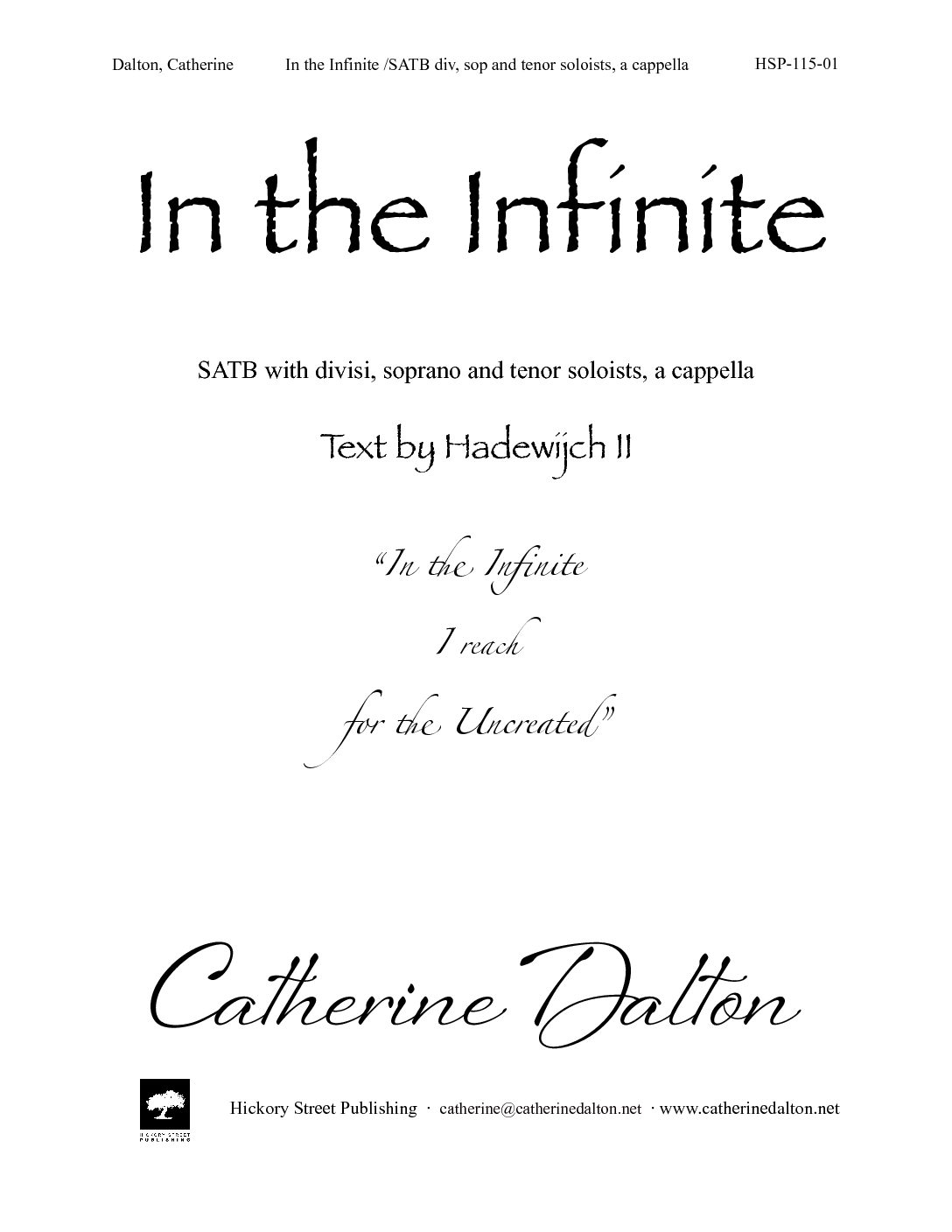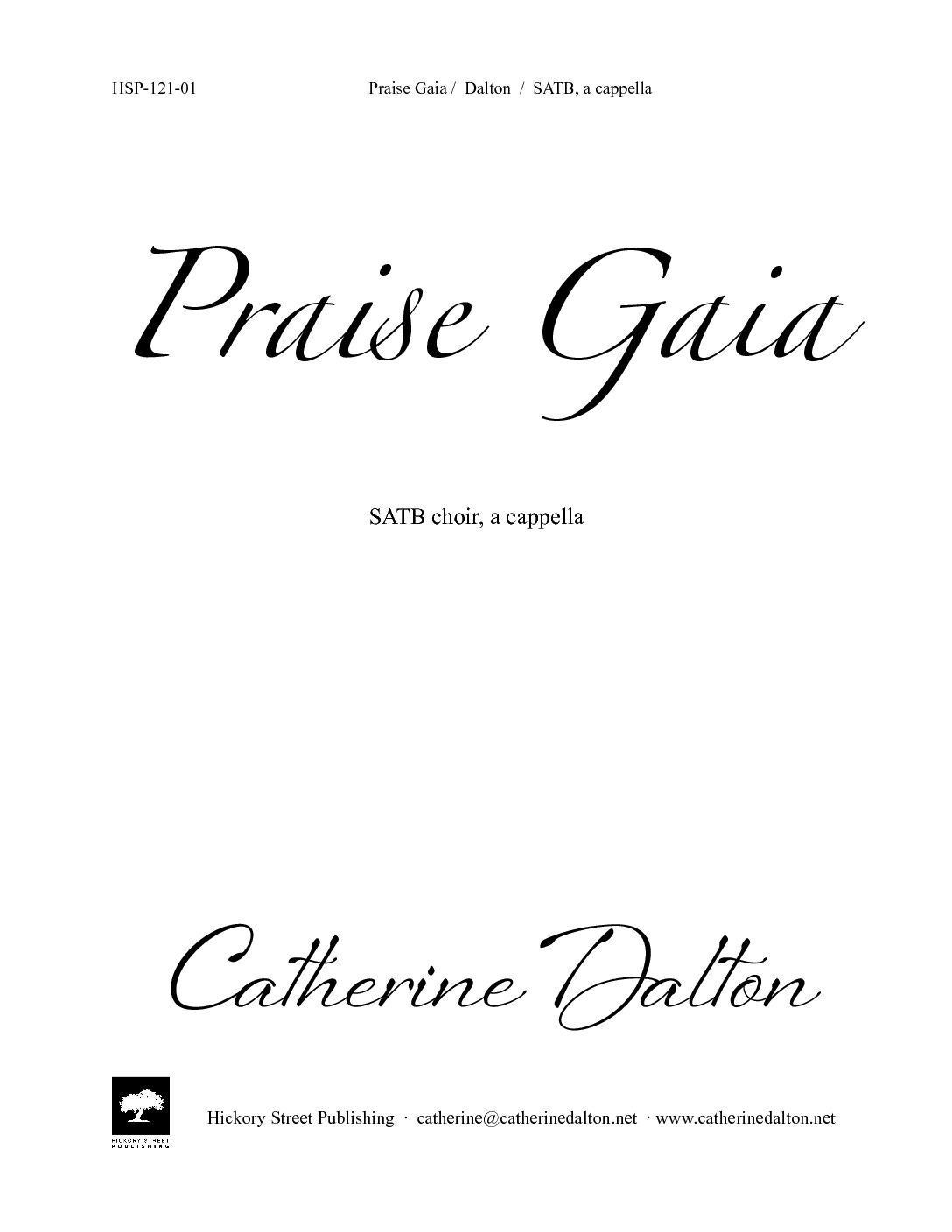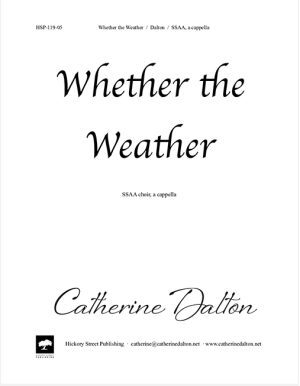Description
A beautiful melody serves as the basis of this meditative chant which evolves into an ethereal canon. Sweet Radiant Mystery was born of my own contemplative practice and desire to see the world with open eyes, even if that means seeing things from a different point of view. The piece mirrors both everyday life and our ever-present breath. There are moments of both tension and release, of work and of rest.
Text
O Sweet Radiant Mystery,
set us free from that which binds,
beckoning the soul to fly.
O Sweet Radiant Mystery,
open our eyes to see beyond
that which hides the soul from light.
O Sweet Radiant Mystery,
help us hear the endless song
of all that is and was and ever shall be.
Catherine Dalton, 2008
Program Notes
A beautiful melody serves as the basis of this meditative chant which evolves into an ethereal canon. Sweet Radiant Mystery was born of my own contemplative practice and desire to see the world with open eyes, even if that means seeing things from a different point of view. The piece mirrors both everyday life and our ever-present breath. There are moments of both tension and release, of work and of rest.
“From a teaching perspective, this one should be a quick read, even for less experienced ensembles. In general, the piece is an extended round, with minimal complications, suitable for a number of concert themes and pedagogical uses. It is so much more than “just” a round though. There is beauty found between the notes, and within each overlapping imitation. Savoring these moments creates a contemplative cloud that envelops the singer and the audience alike.
The work has no key signature given, but the voice parts can be read as if in d (natural) minor. This is great chance for la-minor solfege! Its rhythms are all half notes and quarter notes, along with some ties, and so can be sight-read. All in all, the piece will likely not be difficult to learn.
The beauty of this work…comes from its spare nature and clarity. The interest lies in the breaths between phrases and the space – vocally, metaphorically, and otherwise – created in the moment. The piece…provides ample opportunity for the growth of your ensemble through phrasing, breathing, and word stress. The intentionality found in each note, each phrase, each lift, can be stunning.
The accompaniment is a four-measure pattern which repeats continually until the end of the song. It is intended to be played on piano or handbells. If using piano, the chords should be approached with bell-like clarity. Another option might be educational hand chimes, if you wanted the ensemble to accompany themselves, but that might take away from the meditative nature for the singers. If the performance goal is to involve other ensembles/departments, you might be able to use a small combination of Orff instruments, marimba, or vibes as well, but that likely depends on the resonance of your space and your instruments. The goal is to use something that will strike clearly and continue sounding until dampened.
Woven together with great care, the phrases foster a contemplative, meditative feeling. Thus, the text transcends the typical sacred/secular divisions of our usual choral repertoire.
I can see this piece being used in a number of thematic concerts, as well as a standalone work chosen for its pedagogical qualities (minor solfege, part independence through rounds, etc.). For my ensembles, we first approached the piece during a concert sequence dedicated to mindfulness, and then ultimately performed it during a winter holiday concert/service, when I needed a “feels-sacred-but-is-not-explicitly-Christmas” piece. We all have those type of programming needs, right?!
Ultimately, Catherine Dalton’s selection is readable and/or easily-teachable, with immense opportunity for reflective practice and shaping of musical moments. If done right, there is potential to shape hearts and minds as well.”
From One from the Folder: Repertoire Thoughts for Women’s/Treble Choirs, January 4, 2019 by Shelbie L. Wahl-Fouts; ChoralNet Blog Post, Reprinted with permission from the author.
Critical Acclaim
The beauty of this work…comes from its spare nature and clarity. The interest lies in the breaths between phrases and the space – vocally, metaphorically, and otherwise – created in the moment.
From One from the Folder: Repertoire Thoughts for Women’s/Treble Choirs, January 4, 2019 by Shelbie L. Wahl-Fouts; ChoralNet Blog Post, Reprinted with permission from the author.





Reviews
There are no reviews yet.